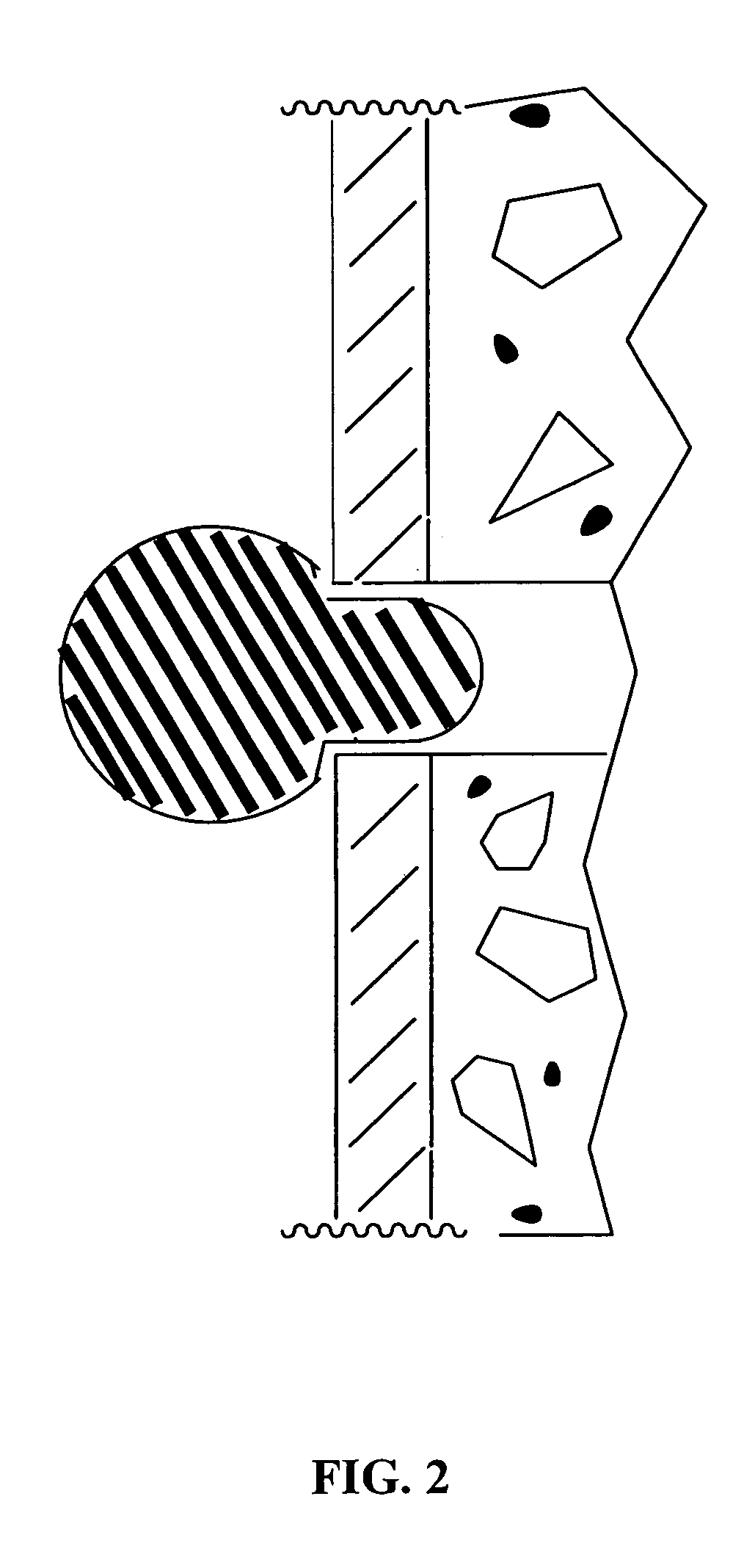Degradable ball sealers and methods for use in well treatment
a technology of degradable ball sealer and well treatment, which is applied in the direction of sealing/packing, fluid removal, borehole/well accessories, etc., can solve the problems of affecting the mechanical reliability of the treatment or stimulation fluid, affecting the mechanical reliability of the treatment fluid, and affecting the treatment effect of the least permeable strata
- Summary
- Abstract
- Description
- Claims
- Application Information
AI Technical Summary
Problems solved by technology
Method used
Image
Examples
example 1
General Manufacturing Procedure
[0083] One or more polymer resins including ENGAGE™ 8402, phenolic NOVOL KK™, and substituted NOVOL KK™ were combined and added to an injection molding machine at a temperature of about 200° F. or greater, depending upon the specific composition. Each of the following examples used ⅞ inch diameter balls were formed with filler material that was low density ceramic powder with dimensions of 0.8 to 0.9 g / cm3. Following molding, the resultant balls were dropped into cool water immediately, then removed and allowed to set. The ball sealers were then tested for dissolution times (solubility) and temperatures, as well as mechanical integrity. The time to failure was measured from the time the ball was exposed to the fluid and the ball simply disintegrated.
example 2
Ball Sealer with ENGAGE™ 8402
[0084] Ball sealers were formed from ENGAGE™ 8402 (The Dow Chemical Co., Midland, Mich.) polyolefin elastomer, using the injection molding technique described above at a temperature of about 320° F. These balls had a high mechanical integrity, and dissolved completely at 200° F. and 250° F.
example 3
Ball Sealer with ENGAGE™ 7467
[0085] Ball sealers were formed from ENGAGE™ 7467, an ethylene-butene copolymer (The Dow Chemical Co.), using the injection molding technique of Example 1 at a temperature of about 250° F. Analysis of the resultant balls at 200° F. showed that the ball sealers dissolved very rapidly, and left a thick, insoluble gelatinous residue. No analysis was done at 250° F.
PUM
 Login to View More
Login to View More Abstract
Description
Claims
Application Information
 Login to View More
Login to View More - R&D
- Intellectual Property
- Life Sciences
- Materials
- Tech Scout
- Unparalleled Data Quality
- Higher Quality Content
- 60% Fewer Hallucinations
Browse by: Latest US Patents, China's latest patents, Technical Efficacy Thesaurus, Application Domain, Technology Topic, Popular Technical Reports.
© 2025 PatSnap. All rights reserved.Legal|Privacy policy|Modern Slavery Act Transparency Statement|Sitemap|About US| Contact US: help@patsnap.com



